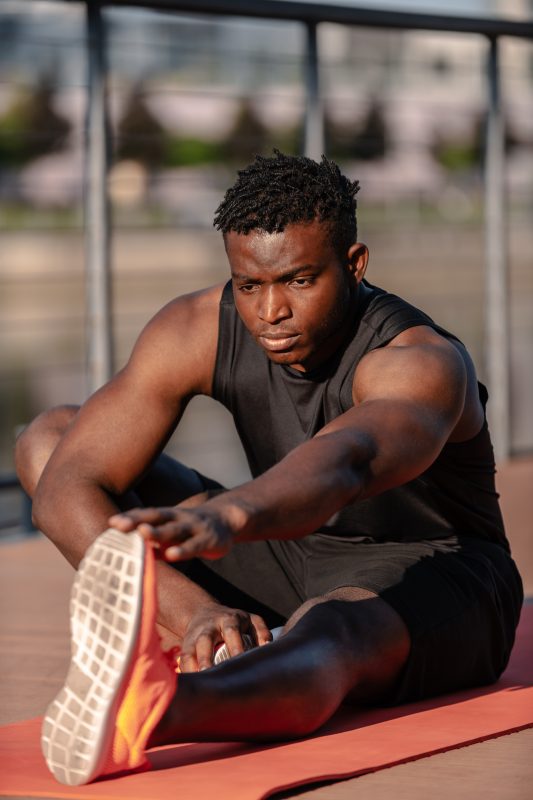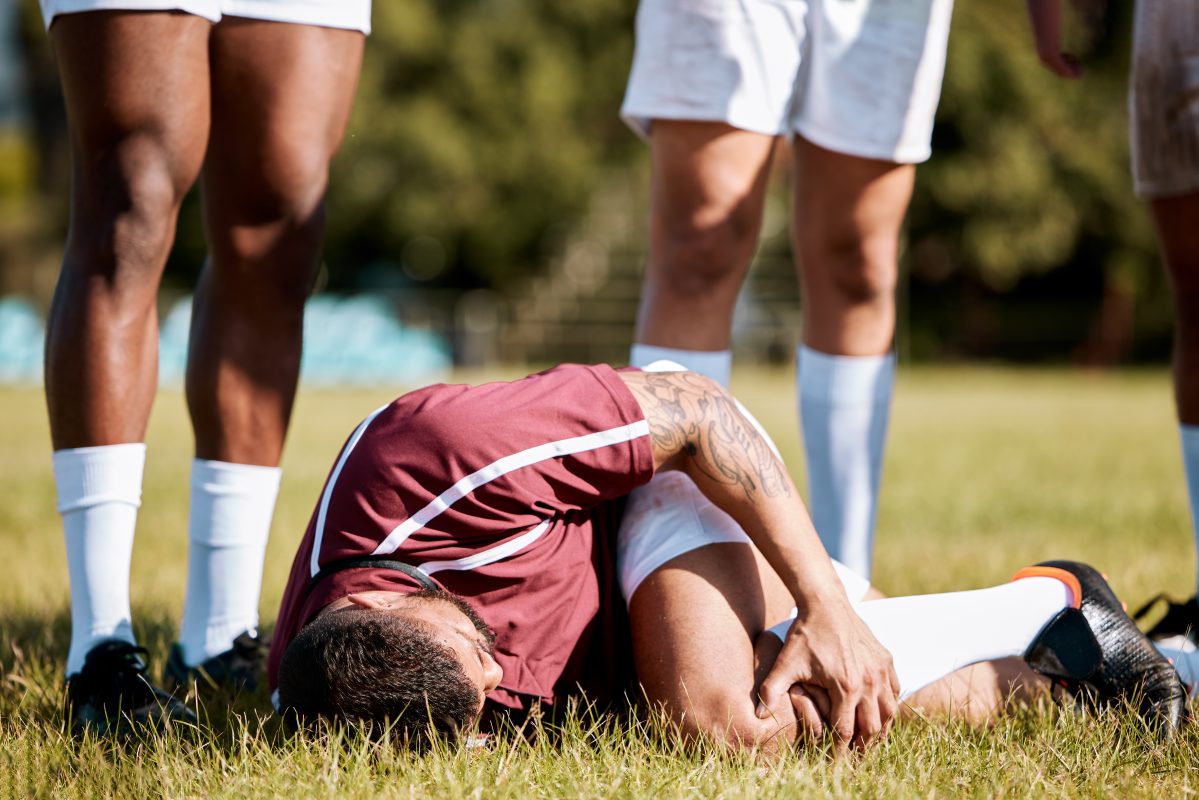Your cart is currently empty!
Category: Sports

Phenoms on the Pitch: The Making and Mentoring of Young Star Athletes
In the world of sports, the rise of young athletes to stardom has long captivated spectators’ attention. These promising talents, often labelled as “phenoms,” have their careers meticulously charted from an early age. On football fields worldwide, countless adolescents showcase remarkable skills and abilities, earmarked as the next Messi or Ronaldo. Yet, the path from youthful promise to professional triumph is steep, strewn with both successes and setbacks. The routes taken and the support systems surrounding these young prodigies warrant closer scrutiny.
Recognising a phenom is an art in itself. They stand out not just in terms of skills, but their understanding of the game, their physical maturity, and their ability to consistently perform at high levels. Scouts affiliated with clubs large and small often spend countless hours seeking the next young star. Clubs invest significant sums in youth academies, hoping to nurture promising talents into professionals.
However, the journey from being recognised as a young phenom to becoming a professional athlete is not always linear or guaranteed. As examples, Wayne Rooney and Lionel Messi, football’s celebrated icons, were both recognised as phenomenal talents at a tender age. Yet, their paths diverged significantly. Rooney, discovered in Liverpool, was nurtured by Everton’s youth system before making his professional debut at 16, while Messi’s journey began in Argentina before Barcelona relocated him to Spain at 13 to hone his talent. Their natural abilities were obvious, but the environments that crafted them were starkly different.
In contrast, not all young star athletes transition smoothly into the professional sphere. Freddy Adu, touted as the “next Pele,” made his professional debut at the tender age of 14 in American soccer but failed to meet the high expectations. Despite his natural ability, the absence of a nurturing environment and the pressures associated with his premature introduction into professional sports impeded his development.
One cannot ignore the considerable psychological impact that comes with the attention young phenoms receive. The line between encouragement and pressure can often blur, leading to immense stress. This spotlight can prematurely thrust them into adulthood, depriving them of a conventional childhood and adolescent experiences.
Mental health issues among athletes, including young ones, are a growing concern. Studies indicate that athletes could be 1.5-2 times more likely to experience mental health problems than the general population. The burden of expectations, the fear of failure, and the constant scrutiny can all contribute to a host of issues, including anxiety, depression, and burnout.
Therefore, an essential question arises: How should parents, coaches, and organisations balance the pressures of managing young star athletes to ensure their development into healthy adults, irrespective of their future in sports?
Creating a supportive environment, with a balanced emphasis on mental health and physical development, is paramount. Parents and coaches should foster a sense of self-worth that goes beyond sporting achievements, nurturing resilience and the ability to cope with success and failure alike.
A shift in perspective can also help. It’s crucial to view these young individuals as children first, athletes second. This can aid in grounding their experiences, allowing them to enjoy the game without the fear of letting down adults’ hopes.
Additionally, clubs and sports bodies must play their part. Professional counselling and psychological support should be made readily available and seen as an integral part of athlete development programs.
Above all, a measured approach to nurturing these young talents should be encouraged. Their journeys are marathons, not sprints, after all. Understanding that every child develops at their own pace, both physically and mentally, is a crucial component of this approach.
The phenomenon of young star athletes is unlikely to wane, fueled by the sports industry’s relentless quest for the next big star. Yet, with more awareness and concerted action, we can ensure that these young phenoms are recognized, nurtured, and supported—both as athletes and individuals—setting the stage for healthier and more balanced adults, regardless of whether they score their goals on the pitch or off it.

Youth Athletic Conditioning: History, Benefits, Dangers, and Best Practices
Youth athletic conditioning is an essential facet of any sporting discipline. When it comes to competitive sports such as football, appropriate conditioning plays a pivotal role in preparing young athletes for competition while promoting their overall health and wellness. However, striking the right balance in youth conditioning is vital. Over the years, a shift from traditional, often aggressive training methods to a more balanced and progressive approach has been observed. This article will explore the historical context, benefits, potential dangers, and best practices associated with conditioning young athletes.
A Historical Perspective: The Evolution of Conditioning
Football conditioning has a historical precedent of being particularly demanding. Infamously referred to as “hell week,” traditional conditioning involved a week of intense training designed to maximize physical capacity in a short period. The arduous, often grueling exercises included lengthy and high-intensity running drills, blocking sleds, full-contact scrimmages, and other exhaustive practices, with minimal rest periods.
However, these traditional methods raised concerns about young athletes’ physical and mental well-being. Progressive thinking advocates a more nuanced approach to youth conditioning, focusing on gradual skill development, maintaining a positive environment, and emphasizing athletes’ long-term health.
The Benefits of Youth Conditioning
Conditioning has multiple benefits. It enhances strength, endurance, agility, and speed – all essential attributes in sports. Conditioning can help athletes achieve peak performance, reducing the risk of injuries by strengthening the muscles and enhancing body control. Psychologically, well-conditioned athletes are often more confident, resilient, and exhibit improved concentration levels.
The Dangers of Inappropriate Conditioning
Despite its benefits, there’s a potential downside to youth conditioning if not correctly implemented. Overtraining can lead to physical and mental burnout, injuries, and decreased performance. Young athletes are especially vulnerable to growth plate injuries, caused by excessive repetitive stress. Psychologically, intense training can result in anxiety, diminished self-esteem, and decreased interest in sports.
Modern Progressive Thoughts versus Traditional Methods
Progressive conditioning methodologies prioritize age-appropriate training, a positive environment, and an emphasis on holistic athlete development. These practices contrast starkly with traditional methods that often focus on early specialization and rigorous training.
A progressive approach ensures that youth athletes develop a broad range of motor skills, improving their athletic foundation. This approach is flexible and fun, fostering a love for sport and physical activity, contrary to traditional methods that could turn sports into a stressful chore.
A Sample Conditioning Plan
Here’s a basic, progressive 6-week conditioning plan for young football athletes:
- Week 1-2: Focus on general fitness and fun games to build stamina and basic motor skills. These could include jogging, skipping, jumping jacks, and tag games.
- Week 3-4: Introduce sport-specific exercises like agility ladders, catching and throwing drills, or non-contact football drills. Encourage flexibility with basic stretching exercises.
- Week 5-6: Gradually add strength training with body weight exercises. Include short-sided, non-contact football games.
The plan should be flexible, focusing on improving skills while making the process enjoyable. Always ensure a proper warm-up before sessions and cool-down afterward.
Best Practices & Things to Avoid
Best Practices:
- Age-appropriate training: Conditioning should match the athlete’s developmental stage, ensuring exercises are suitable for their age and physical maturity.
- Variety: Vary the training to engage different muscle groups and prevent boredom.
- Rest and Recovery: Adequate rest is crucial in preventing overtraining and injuries. Make sure athletes get proper sleep and recovery time between training sessions.
- Nutrition: Healthy eating habits fuel young athletes and aid in recovery.
Things to Avoid:
- Overtraining: Excessive training can lead to physical and mental exhaustion and injuries.
- Early Specialization: Allow children to participate in multiple sports to develop a broad skill set.
- Ignoring Pain or Injuries: Never encourage young athletes to “push through” pain. This could exacerbate underlying injuries.
In conclusion, while youth athletic conditioning is essential in sports, a balanced and considered approach is crucial. Recognizing the benefits, potential dangers, and implementing best practices will help young athletes develop holistically while fostering a love for sport that could last a lifetime.

Finding Lessons in Loss: A Guide for Youth Sports
You’ve probably heard the saying, “It’s not whether you win or lose, it’s how you play the game.” While we all love the thrill of victory, it’s essential to remember that losses can serve as powerful stepping stones on the path to becoming better athletes and more rounded individuals. This principle holds true across all sports, from football to swimming to gymnastics, and is particularly important for young athletes, aged 8-14, in their formative years.
Why Learning from Losing Matters
Why is losing important? In the world of sports, loss is not just an end result; it’s a teacher. By facing defeat, kids learn the essence of resilience, sportsmanship, and self-improvement, laying the groundwork for not just their sports journey, but for life skills they’ll carry into adulthood.
Building Resilience
Losses are hard, especially for kids who put their heart and soul into the game. But it is through these moments that children learn resilience. When they stumble and get back up, they strengthen their ability to cope with adversity, and this grit will be invaluable in sports and beyond.
Promoting Sportsmanship
Experiencing defeat also helps kids understand the concept of sportsmanship. When they shake hands with victorious opponents, they acknowledge that someone else was better on the day, but that doesn’t make them any less of a competitor. It teaches humility and respect, vital traits for every athlete.
Encouraging Self-Improvement
Losing a game can spotlight areas for improvement. Maybe the other team was faster, or your child’s shot wasn’t quite accurate enough. With guidance from coaches and parents, kids can use these observations to set new goals and work harder to achieve them, fostering a growth mindset.
The Good Loser vs. The Sour Loser: An Exploration through Youth Football
While the lessons are universal, let’s zoom in on youth football to better understand what makes a good loser and what makes a sour loser.
The Good Loser
A good loser, or rather, a good sport, recognizes the value in every game, win or lose. They don’t let defeat crush their spirit. Instead, they use it as fuel to improve. These are some attributes of a good loser:
- Graciousness: After a tough football match, a good sport will still shake hands with their opponents and thank the referees.
- Self-Reflection: They’ll take time to ponder on their performance and identify areas where they can improve before the next game.
- Teamwork: Even when things didn’t go as planned, a good sport will encourage their teammates, emphasizing the “team” in “teamwork.”
- Perseverance: The most important trait – a good sport doesn’t give up. They’ll return to practice, ready to work hard and improve for the next game.
The Sour Loser
On the flip side, a sour loser focuses on the defeat, not the lessons it brings. This mindset can lead to negative behaviors, such as:
- Blaming Others: A sour loser often points fingers at teammates, referees, or even the weather for their defeat, instead of reflecting on their own performance.
- Poor Sportsmanship: They may refuse to shake hands, throw a tantrum, or sulk after a loss.
- Giving Up: Sour losers might lose motivation to keep practicing or even consider quitting the sport altogether.
By promoting the qualities of a good sport and discouraging those of a sour loser, we can help young athletes make the most out of every win and every loss.
Final Thoughts
Losses are a part of life and especially a part of sports. They may sting in the moment, but they’re also valuable opportunities to grow. As parents, coaches, and mentors, we should help kids navigate these moments, teaching them that it’s not just about the scoreboard but the lessons learned along the way.
So, let’s encourage our young football players, basketball enthusiasts, budding swimmers, and all young athletes to embrace every result, because every game, every match, every race is a step forward in their journey. Let’s cheer them on as they learn, grow, and become not just better athletes, but stronger individuals.
Remember, it’s not whether you win or lose, it’s how you play the game. And part of playing the game well is learning to lose with grace and dignity, using it as a launchpad for self-improvement and success.

Navigating the Inevitable: A Comprehensive Look at Injury in Youth Sports
In the realm of youth sports, victory cheers and teamwork lessons often share the stage with another inevitable element: injuries. These physical setbacks are not exclusive to high-impact games like football or wrestling; they sneak into non-contact sports like baseball and volleyball too. From the tender age of five up to young adulthood, athletes confront various injury risks. As parents, coaches, and mentors, our understanding and reaction to these risks can make a world of difference.
Delving Deeper into Youth Sports Injuries
The Mayo Clinic has startling statistics that underline the prevalence of injuries in youth sports. Their studies indicate that roughly 45 million children and adolescents participate in sports annually, with 3.5 million of these participants suffering injuries. WebMD reinforces these figures, noting that one in three children engaged in team sports sustain injuries severe enough to sideline them from practice or games. Even non-contact sports, previously considered ‘safer’, have seen an uptick in injury reports.
However, it’s also worth noting the strides we’ve made in improving safety protocols and equipment over the years. The American Orthopedic Society for Sports Medicine reveals that the advancements in protective gear, from better-designed helmets to more efficient padding, have resulted in a significant decline in certain types of injuries.
Recognizing and Responding to Different Injuries
Different injuries demand varied responses. Minor ones such as superficial wounds or sprains often need first-aid treatments and ample rest. More serious injuries like concussions, which affect brain function, or shoulder and knee injuries, which can limit mobility, necessitate immediate professional medical attention. Extremely severe injuries, such as spinal cord damage or bone fractures, could mean emergency interventions and extended medical care.
Teaching our young athletes to discern between pain, soreness, and injury is also crucial. Pain often arises during or immediately post-activity and might signify injury. Soreness usually manifests a day or two after exertion and is the body’s normal response to intense activity. Persistent pain, despite rest and treatment, can indicate a serious injury.
Pressure to Perform and the Need for Emotional Support
In competitive youth sports, the pressure to perform can be immense, particularly for star players. It’s imperative to prioritize their health over game outcomes. Rushing back to the field can worsen injuries, causing long-term complications, and potentially ending their sports journey prematurely.
To help young athletes cope with healing time, we can implement techniques like mindfulness meditation, which has been shown to reduce stress and anxiety. Guided imagery exercises can also help athletes visualize their recovery and return to the game. Encouraging open communication about their feelings of letting their teammates down can also help manage emotional pain and pressure.
Conditioning for Safer Sports Practices
Many teams and schools are progressively adopting safer sports practices. The Safe Sports School program, proposed by the National Athletic Trainers’ Association, emphasizes emergency action planning, equipment fitting, and comprehensive healthcare.
One key facet of this approach is an emphasis on conditioning. Good conditioning, involving strength training and flexibility exercises, can not only help prevent injuries but also speed up recovery when injuries occur. Additionally, these practices can have life-long benefits, instilling good exercise habits and promoting overall physical health well into adulthood.
Conclusion
Injuries, while an unwelcome part of youth sports, don’t have to mar a young athlete’s experience. By deepening our understanding of injuries, making suitable responses, and nurturing emotional well-being alongside physical health, we can create an environment where sports remain a source of joy. As we navigate the evolving landscape of youth sports, we must remember our ultimate goal is not just to create better athletes but also healthier individuals for life.

Breaking the Line of Scrimmage: The Evolving Role of Girls in Youth Football
A seismic shift is underway in the realm of youth sports, and football is no exception. More and more girls between the ages of 8 to 14 are now strapping on helmets, lacing up cleats, and charging onto gridirons, demonstrating that football is not solely a boys’ domain.
The Growth of Girls in Youth Football:
Girls are not merely entering football fields in higher numbers, but they are also making their presence felt in a variety of sports, including wrestling, basketball, and soccer. As per the Women’s Sports Foundation, participation in basketball increased by 4.6% and soccer by 7.3% from 2019 to 2022 among girls. But, it’s in football where some of the most significant strides have been made. According to the Sports & Fitness Industry Association, the number of girls playing tackle football has doubled in the same period, albeit the overall percentage remains low at around 2.4%. However, this consistent upward trend signifies an essential step towards gender diversity in sports.
Common Positions Played:
Contrary to prevailing stereotypes, girls are breaking the mold and mastering diverse positions from offensive linemen to wide receivers. Given the current trajectory, it’s not unrealistic to predict that we may soon see a woman playing a skilled position at the college or even the professional level. The NFL’s first female referee, Sarah Thomas, is a testament to the evolving norms and the potential of women making a mark in professional football.
Addressing the Physicality Debate:
Concerns about the increasing physicality of boys as they mature have sparked discussions about the appropriateness of girls participating in football. However, it’s vital to note that girls are proving their strength and resilience in various domains. Young female weightlifters are breaking records, and elite female athletes often outperform average male counterparts. For instance, the average elite female marathoner can easily outpace most men. Like these athletes, girls in football rely on strategic thinking, agility, and technical prowess, which can bridge the strength gap.
Influential Women in Leadership:
Women have shattered glass ceilings in various arenas traditionally dominated by men, providing inspiration for young girls in football. From the political sphere, the likes of Condoleezza Rice have made significant strides. Rice’s distinguished political career, which culminated in her becoming the first African-American woman to serve as Secretary of State, and her subsequent leadership roles, including on the College Football Playoff selection committee, reflect the increasing acceptance of women in traditionally male domains.
Historically, women like Yaa Asantewaa, the queen mother of the Ashanti Empire, led a war against colonial powers, demonstrating that women can lead and succeed even in the most challenging circumstances.
Historical Precedent: Matriarchal Societies:
The increasing involvement of girls in football also mirrors the practices of historical matriarchal societies where women held central roles. From the Indigenous tribes of North America to African societies like the Akan, these societies valued female leadership and active participation, much like the evolution we’re witnessing today on football fields.
Conclusion:
The rise of girls in youth football signals a progressive shift in societal attitudes and the breaking of gender stereotypes. As these young athletes push boundaries, they prove that attributes like courage, determination, and competitive spirit are not gender-specific.
For parents of girls showing interest in football, it’s essential to nurture their passion. Encourage them, provide them with the resources they need, highlight positive role models, and always remind them that there’s no field of play where they don’t belong. The world of sports is evolving, and with continued support, our girls will not just participate, but excel and redefine the landscape of youth football.

Leveraging Social Media for Athletes: Exposure, Recruitment, and Conducting Online Presence
In today’s digital era, social media plays a vital role in the world of sports, particularly for young athletes. Platforms like Twitter, Instagram, and TikTok offer unique opportunities for exposure, recruitment, and building an online presence. High school and college coaches heavily rely on social media to connect with prospects, and athletes can showcase their talents, achievements, and personalities to a wider audience. However, it is crucial for athletes to navigate social media responsibly. In this blog post, we will explore the significance of social media for young athletes, provide examples of acceptance announcements, and discuss guidelines for conducting oneself online.
- The Impact of Social Media in High School and College Athletics: a. How social media has revolutionized athlete exposure and recruitment. b. High school and college coaches leveraging platforms like Twitter, Instagram, and TikTok to connect with prospects. c. Examples of athletes sharing commitment announcements through creative social media posts.
- Conducting Oneself Online: Guidelines for Young Athletes: a. Promoting a positive and professional image through social media presence. b. Demonstrating good sportsmanship, respect, and integrity in online interactions. c. Avoiding controversial topics, offensive language, and engaging in respectful discussions when appropriate.
- Building an Authentic Online Presence: a. Showcasing an athlete’s unique personality, interests, and achievements. b. Sharing training routines, behind-the-scenes glimpses, and insights into the athlete’s journey. c. Developing a personal brand that aligns with an athlete’s values and goals.
- Examples of Acceptance Announcements: a. Highlighting creative and memorable ways athletes have shared their commitments to colleges or universities on social media. b. Incorporating videos, graphics, and heartfelt messages to celebrate the next step in their athletic journey. c. Showcasing the excitement and pride surrounding acceptance announcements.
- Benefits and Risks of Social Media for Athletes: a. Discussing the advantages of leveraging social media to gain exposure, connect with fans, and access endorsement opportunities. b. Highlighting the potential risks associated with inappropriate content, cyberbullying, and negative interactions. c. Encouraging athletes to exercise caution, maintain privacy settings, and think before posting.
- Conducting Online Presence: Best Practices for Athletes: a. Being mindful of the impact of posts on future opportunities, including recruitment and endorsement deals. b. Engaging with fans and supporters in a positive and respectful manner. c. Collaborating with coaches, mentors, and parents to ensure a consistent and professional online presence.
Conclusion: Social media has become a powerful tool for young athletes to gain exposure, connect with coaches, and build their personal brand. By understanding the significance of social media, following guidelines for online conduct, and showcasing their talents and achievements authentically, athletes can maximize the benefits and mitigate the risks associated with social media. Remember, social media can be a valuable asset when used responsibly and thoughtfully, helping athletes shape their athletic journey and share their successes with a broader audience.

The Game-Changing Landscape of Youth Sports: Understanding NIL Rights and Its Impact
In a landmark move, the National Collegiate Athletic Association (NCAA) in 2021 allowed college athletes in the United States to profit from their Name, Image, and Likeness (NIL). This meant a seismic shift in the sports world, especially at the college level, but also with ripple effects reaching down to youth sports.
While the primary impact is on college athletes, the potential implications for youth sports are significant and complex, particularly for those identified as sporting prodigies or phenoms. Parents, guardians, and coaches of these budding athletes need to be aware of these implications and tread with careful consideration.
Pros of Youth Athletes Profiting from NIL
Monetizing Talents: Young athletes with exceptional skills now have the opportunity to monetize their abilities at an early age. Sponsorship and endorsement deals can provide financial support for further training, equipment, travel, and other expenses associated with competitive sports.
Building a Personal Brand: The new rules open the door for young athletes to build their personal brand early. A well-crafted personal brand could significantly increase an athlete’s marketability and earning potential later in their career.
Empowering Athletes: In the past, many organizations made significant profits from the skills and talents of young athletes without the athletes themselves seeing any financial benefit. The new rules could help to redress this balance and give more power to the athletes.
Cons and Complexities
Increased Pressure and Scrutiny: The possibility of profit might increase pressure on young athletes to perform, creating an added layer of stress. Furthermore, their public life could face heightened scrutiny.
Ethical and Legal Issues: Commercial contracts involving minors can be complex and fraught with legal and ethical challenges. Ensuring that a child’s interests are properly protected can be a difficult task.
Risks of Professionalization: With the potential for profit, there’s a risk that youth sports may become overly professionalized, with less emphasis on fun, enjoyment, and holistic development.
Under-The-Radar Aspects
Impact on Team Dynamics: If one or two players on a team are earning money from their NIL, it could lead to jealousy and division among teammates.
Long-Term Uncertainty: A child identified as a prodigy at age 8 or 9 may not maintain their trajectory. If their career doesn’t pan out as expected, they could be left with few other skills or qualifications.
Market Over-Saturation: As more athletes seek to monetize their NIL, the market could become oversaturated, making it harder for individuals to stand out and be successful.
Parental Guidance: 10 Considerations
Navigating this landscape can be challenging for parents. Here are 10 key considerations:
- Understand the Rules: Ensure you have a clear understanding of the current rules and laws regarding minors and NIL rights.
- Focus on Long-Term Development: Keep the focus on long-term development and enjoyment of the sport rather than short-term financial gain.
- Hire Expertise: If considering a sponsorship or endorsement deal, seek legal advice to ensure contracts are fair and protective of your child’s rights.
- Create a Financial Plan: If your child does make money, have a financial plan in place. This might include setting up a trust or savings account for future education or career training.
- Prioritize Education: Ensure your child’s education remains a priority. Not all young athletes will have a professional sports career, so it’s important they’re prepared for other paths.
- Manage Expectations: Help your child maintain realistic expectations about their earning potential.
- Guard their Time: Ensure your child has time to be a child – to study, to play, to spend time with friends.
- Consider the Impact on Team Dynamics: Understand the possible impact on team dynamics if your child is the only one earning money.
- Understand the Market: Assess the market’s appetite for youth athlete endorsements and be realistic about the likelihood of success.
- Address Psychological Impact: Consider the psychological impact of such early exposure to fame and commercialization, and don’t hesitate to seek professional mental health guidance if necessary.
The world of youth sports is evolving rapidly, and with these changes come new opportunities and challenges. By keeping these considerations in mind, parents can help ensure their young athletes navigate this landscape with integrity and resilience, while also preparing for a successful future – in sports and beyond.

Weighing the Implications of Removing the Kickoff from Youth Sports
In recent years, youth football has been the subject of increasing scrutiny due to the potential risks and safety concerns it poses to young athletes. One proposed measure to mitigate this risk has been to remove the kickoff, a critical aspect of the traditional game. While this measure aims to prioritize player safety, it also raises questions about whether it would fundamentally alter the game and potentially deliver an unintended message to young athletes.
The Kickoff: A Closer Look
Kickoffs, though integral to the game, are associated with a heightened risk of player injuries. A comprehensive five-year study from the Datalys Center for Sports Injury Research and Prevention indicated that kickoffs represent only 6% of plays but account for 21% of severe injuries in high school football games (2015-2019). Similar injury rates have been observed in youth leagues, although they remain less studied.
Pros of Removing Kickoff
- Reduced Injury Rates: Eliminating kickoffs could drastically reduce the injury rates in youth football. Researchers believe the high-speed collisions typically seen during these plays are primarily responsible for the increased risk of concussions and severe injuries. Thus, removing this part of the game could have a significant impact on player safety.
- Emphasizing Skill Development: By focusing on regular plays, coaches can invest more time in training young athletes in core football skills such as blocking, tackling, passing, and catching. This can lead to a more skill-oriented game, which could be safer and more rewarding for the players.
Cons of Removing Kickoff
- Changing the Game’s Nature: The kickoff has been a part of football since its inception. Removing it would fundamentally alter the game’s structure and could draw criticism from purists who argue for the importance of tradition and the original rules.
- Potential Negative Messaging: Removing a challenging part of the game could send a message to young players that removing risk is preferable to managing it. This can echo sentiments found in the “everyone is a winner” mentality, which has been criticized for failing to prepare children for real-world situations where they may face failure, risk, and adversity.
Navigating the Debate: The Role of Parents and Coaches
The potential removal of the kickoff from youth football presents a complex debate, weighing the values of tradition and resilience against the imperative of player safety. Parents and coaches can play a critical role in shaping this discussion:
- Promote an Open Dialogue: Parents and coaches should engage in discussions about the safety and fundamental values of the sport. They can share their opinions with league organizers and be advocates for the players’ wellbeing and the spirit of the game.
- Encourage Skill Building: Coaches can emphasize skill development over risky gameplay. Teaching proper tackling techniques, for example, can help minimize the risk of injury.
- Educate on Risk Management: Parents and coaches should educate young players about managing risks, teaching them that courage does not equate to recklessness.
In conclusion, as we strive to ensure the safety of our children in youth football, it is essential to maintain a balanced perspective. Removing the kickoff might significantly reduce injury rates, but it also challenges the nature of the game and the messages we send to young athletes. The answer, as often, may lie in a well-informed middle ground where safety measures, education, and respect for the game’s values coexist and thrive.

Trials and Tribulations: The Unheralded Role of a Youth Sports Referee
Being a youth sports referee is a challenging and often thankless job that involves managing coaches, parents, making tough calls, and occasionally facing controversy. It requires a unique temperament, a solid understanding of the game, and a range of human qualities. In this blog post, we will explore the qualities required to be a great referee, shed light on lesser-known aspects of the role, and discuss the viability of pursuing a career in youth sports refereeing.
- The Ideal Temperament of a Great Referee: A great referee possesses several essential qualities, including patience, composure, and impartiality. Remaining calm and composed in high-pressure situations is crucial to maintaining control on the field and making fair decisions. A good referee must also have a thick skin, as they may face criticism and hostility from coaches, players, and parents. The ability to remain objective and not let personal biases influence calls is vital to earning respect and trust.
- Game Knowledge: A thorough understanding of the sport being officiated is essential for a referee. They must be well-versed in the rules and regulations, ensuring fair play and enforcing them consistently. Knowledge of game strategies, tactics, and player positions allows referees to anticipate and prevent potential rule violations. Continual learning and staying up-to-date with rule changes are imperative to maintain competence and accuracy on the field.
- Human Qualities: Apart from technical skills, referees need certain human qualities to excel in their role. Effective communication is vital to interact with coaches, players, and parents in a respectful and clear manner. Diplomacy and conflict resolution skills help diffuse tense situations and promote a positive atmosphere. Empathy and understanding are essential in dealing with passionate individuals who may have differing opinions. A good referee fosters a safe and inclusive environment for all participants.
- Lesser-Known Aspects of Being a Referee: One lesser-known aspect of being a referee is the mental and physical demands it entails. Referees must remain mentally alert throughout the game, making split-second decisions while under immense scrutiny. Physically, they need to maintain fitness levels to keep up with the pace of the game and position themselves optimally for accurate calls. Additionally, referees invest time and effort in studying and attending training sessions to enhance their skills and knowledge.
- Financial Considerations: Youth sports refereeing is typically a part-time or seasonal occupation. While pay rates vary depending on the sport and geographical location, it is generally modest. Referees at the youth level often receive compensation on a per-game basis, ranging from $20 to $50 per game. Making a career solely out of youth sports refereeing can be challenging due to limited earning potential. However, some referees progress to officiating at higher levels, such as collegiate or professional sports, where the pay is more substantial.
Youth sports referees undertake a challenging role that requires a unique set of skills and qualities. They navigate complex dynamics involving coaches, parents, and players while making difficult and controversial decisions. The ideal temperament of a great referee combines patience, composure, and impartiality. Game knowledge, effective communication, and human qualities contribute to their success. Despite the demanding nature of the job and the modest financial compensation, it is crucial to appreciate and respect the invaluable role that referees play in creating a fair and enjoyable environment for youth sports.